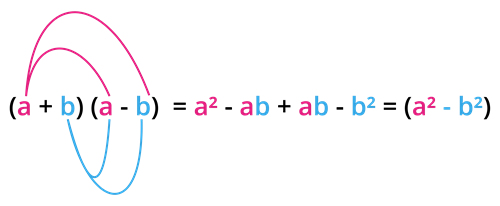UPSKILL MATH PLUS
Learn Mathematics through our AI based learning portal with the support of our Academic Experts!
Learn moreIdentity \(- 4\):
Let us first, simplify the identity .
Multiply the expression, as shown below.

Now, we construct a figure to understand the concept.

Then we construct a rectangle using the above information.
In the given figure, \(AB = AD = a\).
So, the area of square \(ABCD = a^2\).
So, the area of square \(ABCD = a^2\).

Also, \(SB = DP = b\). Then the area of the rectangle \(SBCT = ab\).
Similarly, the area of the rectangle \(DPRC = ab\). And the area of the square \(TQRC = b^2\).
Area of the rectangle \(DPQT = ab − b^2\).
Hence, \(\text{the area of the rectangle APQS = The area of square ABCD}\) \(\text{– area of rectangle STCB}\) \(\text{+ area of rectangle DPQT}\).
Therefore, .
Example:
Simplify using the identity.
First, develop the given expression using the identity .
Here, \(a = 5x\); \(b = 7y\).
Therefore, \(=\) 25\(x^2 -\)49.